15 Types Of Phone Calls Boomers Had That Absolutely Don’t Happen Anymore
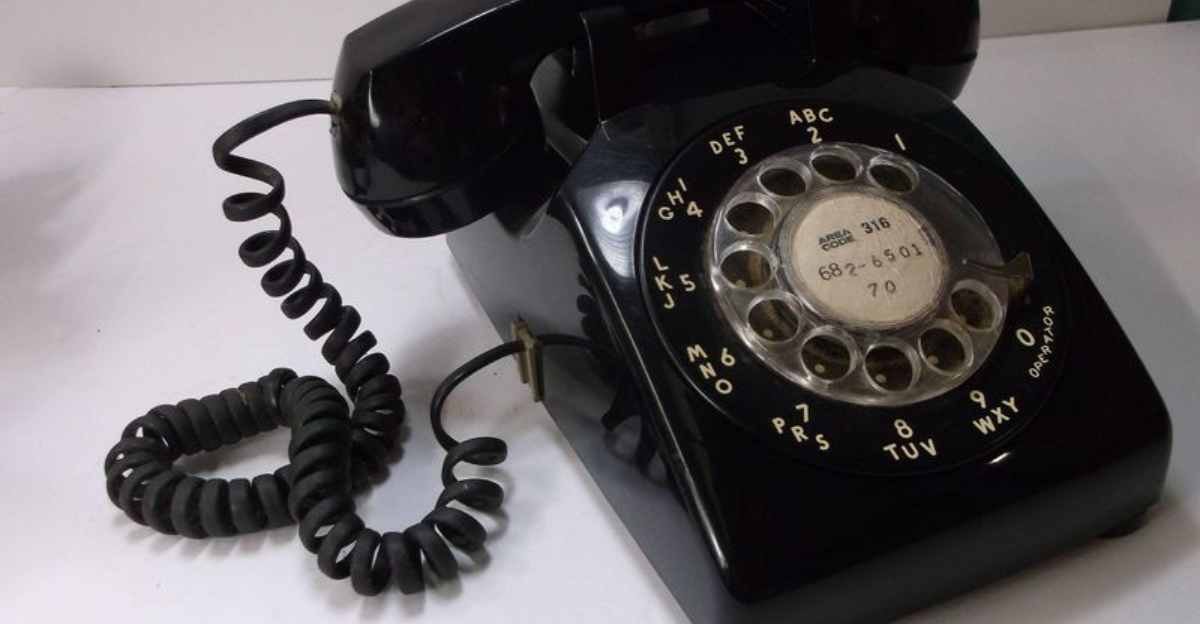
Oh, remember when making a phone call felt like an occasion rather than something you did while half-watching TV or microwaving leftovers? Back in the ’70s, the household phone wasn’t just a gadget—it was the throne of communication, parked on its own little table, usually with a phone book thicker than a brick right beside it.
I vividly remember watching my parents dial those clunky rotary phones, their fingers dancing carefully through the spinning wheel, only to start over if they messed up the last digit.
Long-distance calls were reserved for major life events and came with strict time limits and whispered urgency. There were unspoken rules, like never calling anyone during dinner or after 9 PM unless someone was in labor.
Phones had cords, actual rings (that you could hear down the block), and zero privacy unless you had an extra-long cord to stretch into a closet. Ah, those were the days—when calling someone meant something!
1. Calling Someone to Ask a Quick Question
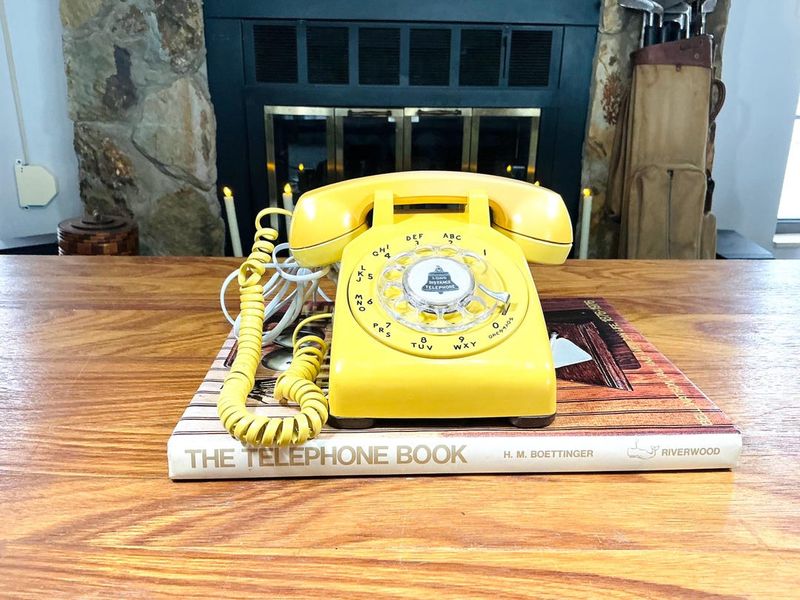
Last week I found myself Googling what time the hardware store closed instead of just calling them. Why? Because nobody makes casual information calls anymore!
Back in boomer days, picking up the phone to ask a quick question was totally normal. Need to know what time a movie starts? Call the theater. Wondering if your friend has the homework assignment? Dial their number. Curious about store hours or if an item is in stock? The telephone was your go-to information tool.
These micro-calls served a practical purpose before smartphones put the world’s information in our pockets. Now we’d rather scroll through a poorly designed website for five minutes than endure the awkwardness of a 30-second human conversation. The casual information call has been replaced by search engines, apps, and text messages—trading human connection for the convenience of never having to say, “Thanks, bye!”
2. The Collect Call Hustle
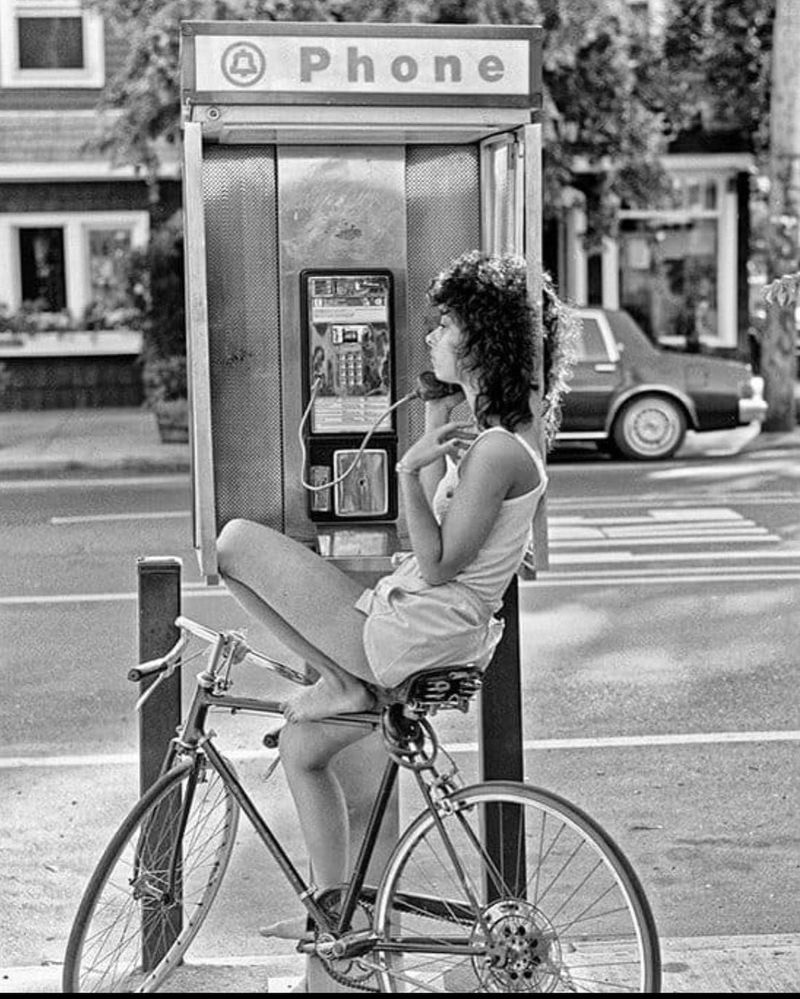
“Would you accept a collect call from…” and then you’d quickly blurt out “Mom-I’m-ready-for-pickup-don’t-accept!” That little hack saved countless quarters during my teenage years.
Collect calls were the original text message—brief, efficient communication without paying a dime. The system worked like this: you’d dial the operator, tell them your name, and they’d ask the receiving party if they’d accept charges. Savvy boomers turned this into an ingenious communication system by cramming their entire message into the name slot.
Parents and kids had this secret code that drove phone companies crazy. “Collect call from ‘The-movie-ended-early-pick-me-up-now.'” The recipient would decline the charges but get the message for free. Today’s kids with unlimited calling plans will never know the thrill of gaming the phone system or the panic of being at a payphone without change.
3. The Busy Signal Mystery
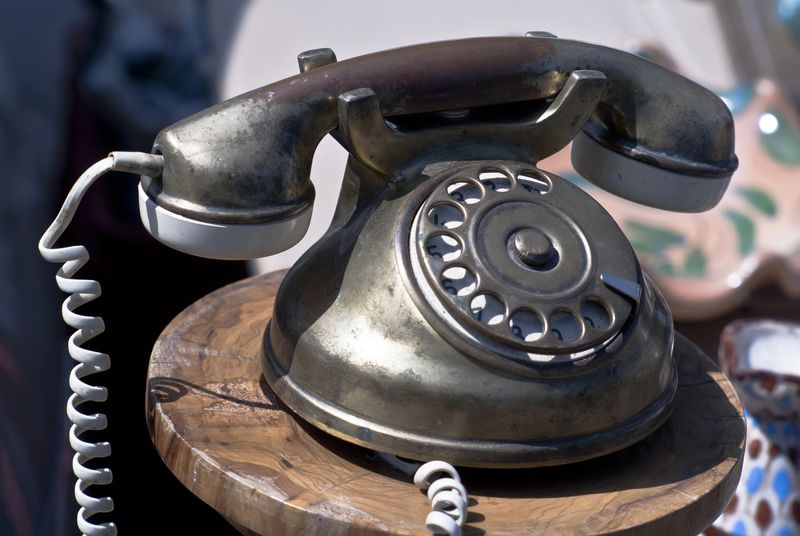
The dreaded busy signal—that rapid-fire beep-beep-beep that left you wondering what fascinating conversation you were missing out on. My teenage self would redial Jenny’s number compulsively, convinced she was gossiping about the very party I was trying to discuss!
Before call waiting became standard, phone lines could handle exactly one conversation at a time. If someone was already on the phone, other callers would get this auditory brick wall. No voicemail, no text option, no “leave a message”—just the mechanical sound of rejection.
The busy signal created a unique form of social anxiety. Was the person actually talking to someone else, or just leaving their phone off the hook to avoid calls? Were they ignoring you specifically? This uncertainty drove people to redial obsessively, sometimes for hours. Modern phones have eliminated this particular form of telephone torture, but also removed that delicious mystery of what might be happening on the other end.
4. The Long-Distance Relationship Tax
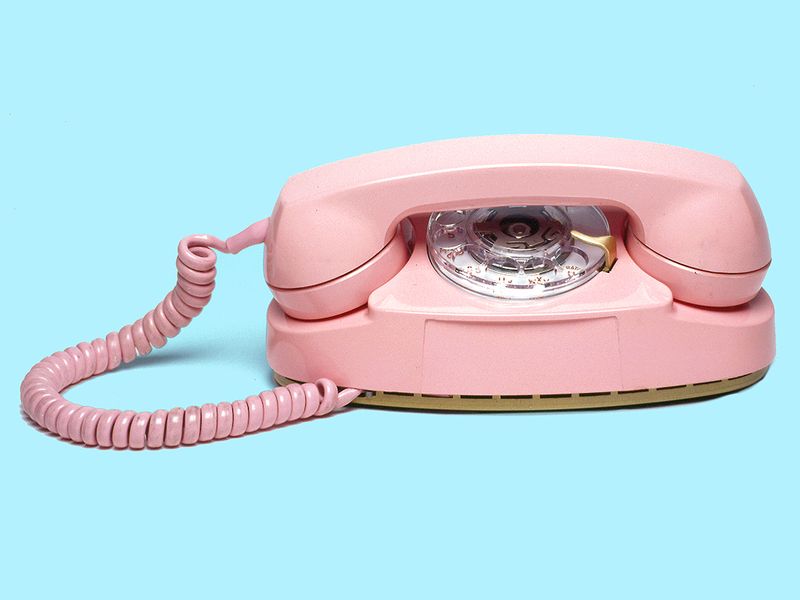
“Make it quick—this is long distance!” Mom would holler whenever my grandmother called from three towns over. The pressure to communicate efficiently while the money meter was running was intense!
Long-distance calls were budgetary events, not casual conversations. Calling someone in another area code meant paying premium per-minute rates that could quickly drain a family’s phone budget. Boomers planned these calls carefully, often saving them for weekends or evenings when rates were lower.
The financial weight of these calls created a unique communication style: concise, information-dense, and often slightly rushed. People would literally time their calls with kitchen timers. This economic pressure shaped how families stayed connected across distances. Today, when I can video chat with my cousin in Australia for free, I sometimes miss the specialness that came with those expensive, carefully planned long-distance connections that felt like rare treats rather than everyday occurrences.
5. The Phone Book Treasure Hunt

Finding someone’s number used to be an adventure worthy of Indiana Jones. I still remember the satisfaction of tracking down my first crush’s number through the white pages, only to have his mom answer!
The phone book—that massive paper doorstop delivered annually—was our Google for human connections. Split into the white pages (alphabetical listings of residents) and yellow pages (businesses by category), these tomes were essential household references. If someone wasn’t listed or you only knew their first name, you’d embark on a detective mission involving mutual friends or calling similar last names.
Phone books created a strange democratic equality where everyone’s contact information was public by default. Celebrities and politicians often had unlisted numbers, creating a mystique around their accessibility. The physical act of thumbing through thin pages, running your finger down columns of tiny print, and the triumph of finally locating that needed number has been replaced by instant digital search—more efficient, perhaps, but far less satisfying.
6. The Family Phone Gatekeeper
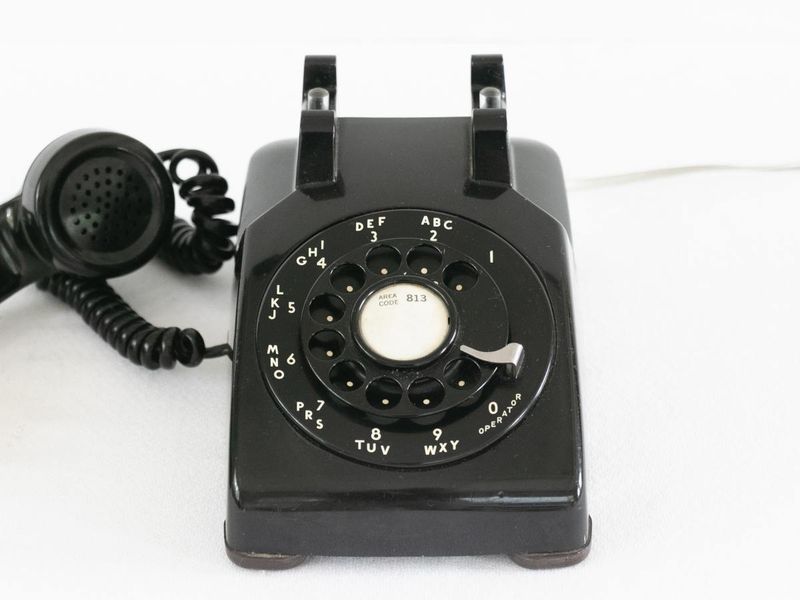
“Johnson residence, this is Mrs. Johnson speaking.” My friend’s mom answered their phone like she was screening visitors to Fort Knox, and in a way, she was!
Before everyone had personal devices, the family phone created a fascinating power dynamic. Parents functioned as gatekeepers, answering calls and deciding whether you were worthy of speaking to their child. This meant developing diplomatic skills to navigate these adult guardians of the telecommunication realm.
Kids learned the art of respectful phone etiquette, knowing that how they spoke to their friend’s parents could determine future phone privileges. “May I please speak with Jennifer?” was the magic phrase, delivered in your most polite voice. The family phone also meant zero privacy—calls often happened in kitchens or living rooms where everyone could hear your business. This shared communication portal created accountability but also taught teenagers impressive code-speaking skills when discussing sensitive topics while family members pretended not to eavesdrop from the next room.
7. The Phone Cord Tangle Ballet
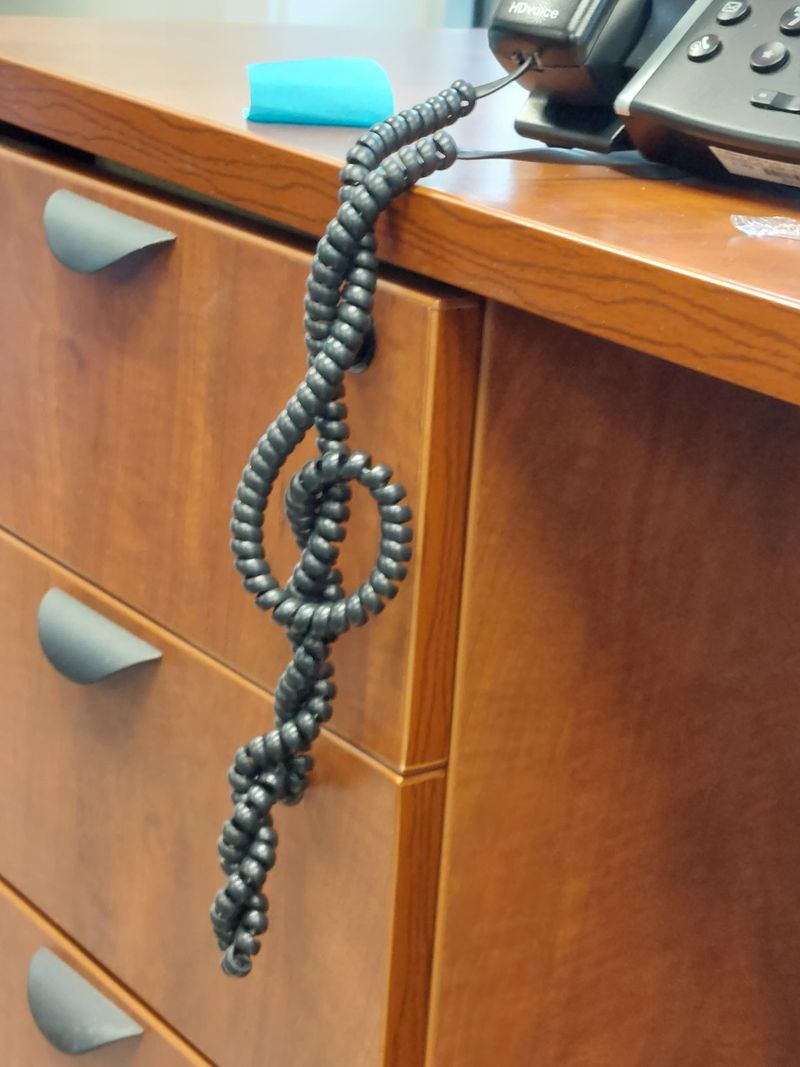
The stretched-out spiral cord on our kitchen phone could have wrapped around the house twice. I became a master at the phone cord dance—twirling, untangling, and stretching that coiled lifeline to reach the pantry for snacks during epic teenage conversations.
These curly umbilical cords tethered us to a specific radius from the phone base, creating physical boundaries for our conversations. The longer the call, the more twisted the cord became, requiring periodic moments of spinning the handset to unwind the mess. Seeking privacy meant stretching the cord to its maximum length, often resulting in a closed door with a cord snaking underneath.
The physical connection created a different relationship with conversations—you couldn’t multitask effectively or wander too far. Talking on the phone was a dedicated activity requiring your presence in a specific location. When cordless phones arrived, they felt revolutionary despite their terrible reception and constantly dying batteries. That freedom from the spiral tether was our first taste of the mobile communication world that would eventually put phones in our pockets.
8. The “I’m On My Way Home” Payphone Ritual
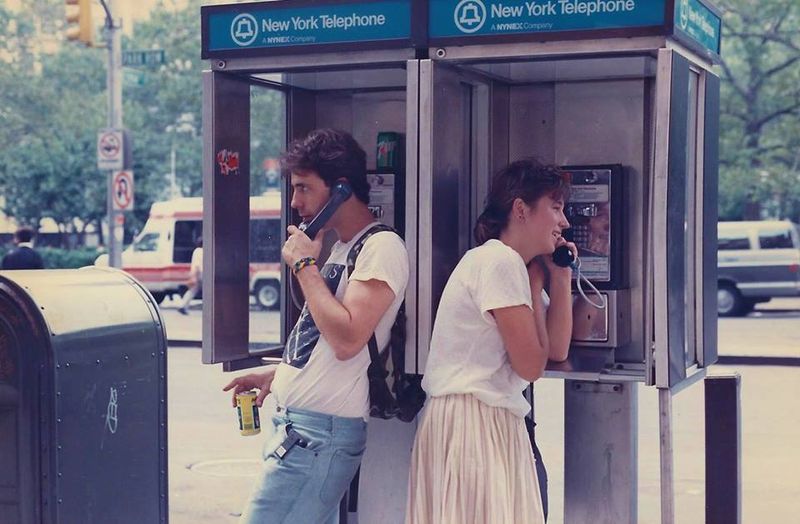
The jingle of quarters in my pocket meant security—I could always call home. Every Friday night ended the same way: dropping coins into a payphone outside the movie theater to tell my parents, “The movie’s over, I’m at the payphone on Main Street.”
Before cell phones, this check-in ritual was how families maintained peace of mind. Parents would give kids quarters specifically earmarked for these safety calls. Finding a working payphone could be a challenge—you’d scan street corners or memorize locations of reliable booths in your regular hangout areas.
These brief communications served as vital connection points between independent activities and family life. The payphone call home represented responsibility and growing autonomy for teenagers while giving parents necessary reassurance. The physical act of feeding coins into the slot, the distinctive sound of the connection, and the slightly raised voice to be heard over street noise were all part of this now-extinct communication ritual. Today’s parents simply text their kids or track their locations via smartphone apps—effective but lacking the character-building aspects of the payphone check-in.
9. The Shared Party Line Drama
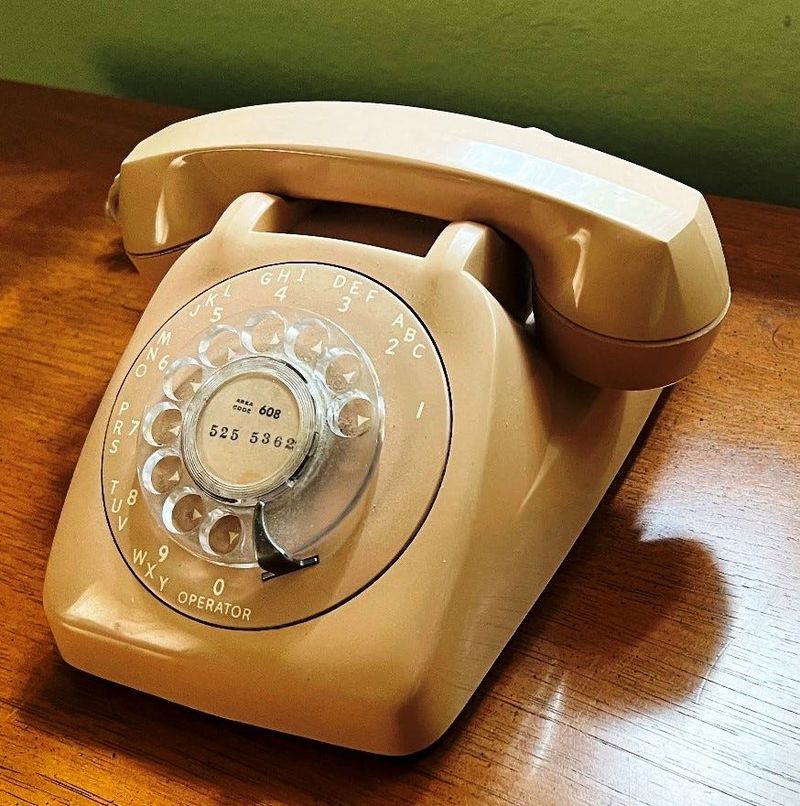
Mrs. Kravitz from three houses down knew all my business because we shared a party line. I learned to recognize her breathing pattern and would whisper “She’s listening again!” to my friends.
Party lines were the original social networks—telephone systems where multiple households shared a single line. Each home had a distinctive ring pattern to identify their calls, but anyone on the shared line could pick up and listen to conversations. This created neighborhoods of inadvertent (or intentional) eavesdroppers and required a complex social etiquette.
Emergency calls took priority, and lengthy conversations were frowned upon since they tied up the line for everyone. The lack of privacy led to coded language between friends and the occasional confrontation with nosy neighbors. The shared nature of party lines meant that telephone use was viewed as a community resource rather than a private service. This system, born of technological and economic necessity, created both friction and connection between neighbors in ways that today’s private communications have eliminated.
10. The Operator-Assisted Connection
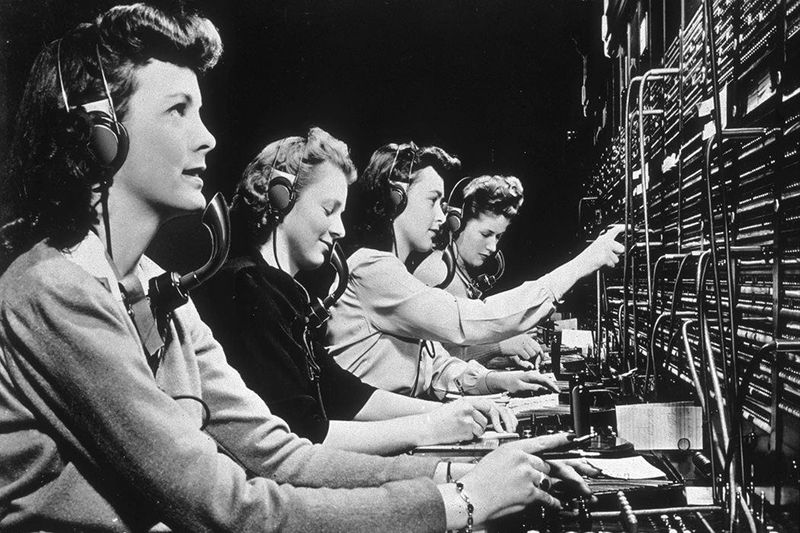
“Operator, could you please connect me to Pennsylvania 6-5000?” The human telephone switchboard was my grandmother’s preferred way to make calls well into the 1980s, long after direct dialing became standard.
Before fully automated systems, human operators were the internet routers of their day—connecting calls by physically plugging cords into switchboards. Placing a call meant first speaking with an operator who would then establish your connection. These telephone gatekeepers helped with everything from finding numbers to emergency interruptions.
Operators represented a curious blend of technology and human touch. They knew their communities, recognized voices, and sometimes served as informal information sources. “The operator will connect you” was a phrase that acknowledged the human infrastructure behind telecommunications.
11. The Dramatic Phone Hang-Up
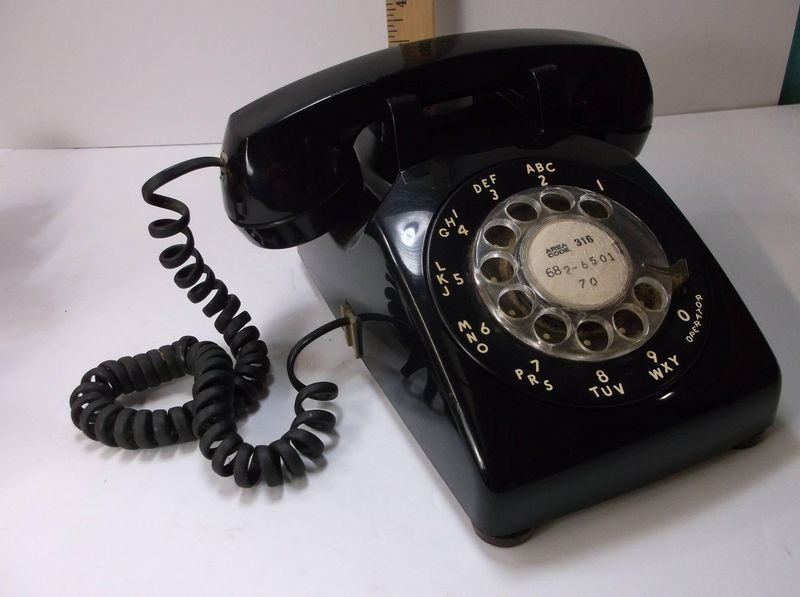
SLAM! Nothing ended an argument like the satisfying crash of slamming down a heavy telephone receiver. My first breakup featured this theatrical finale, and honestly, pressing “end call” just doesn’t deliver the same emotional catharsis.
The physical phones of the boomer era provided perfect tools for expressing communication emotions. The dramatic hang-up was the exclamation point of telephone conversations—a percussive period to end heated discussions. The sound carried finality that both parties understood immediately.
These substantial handsets required commitment to the gesture. You couldn’t accidentally hang up, and the physical action channeled emotional energy in a satisfying way. The weight and design of old telephones turned disconnecting into performance art. Today’s touchscreen disconnects lack this visceral quality—no matter how angrily you tap that red button, it doesn’t produce the same emotional release or auditory statement.
12. The Phone Number Memory Test
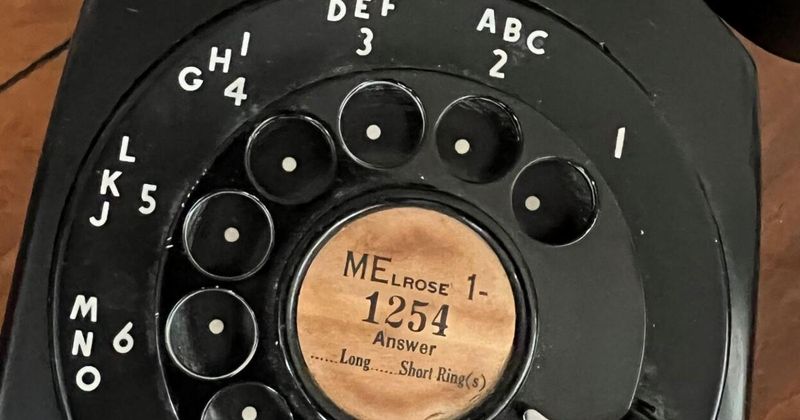
My brain still holds a museum of obsolete phone numbers. I can recite my childhood best friend’s number (555-3642) but sometimes forget my own cell number. We didn’t have contacts lists—we had memory!
Memorizing phone numbers was once a fundamental life skill. People maintained mental catalogs of dozens of important numbers for family, friends, and frequently called businesses. This cognitive exercise created a hierarchy of relationship importance: the numbers you chose to commit to memory reflected who mattered most in your daily life.
Phone booths and public phones had no stored contacts, so forgetting an important number while away from home could mean real communication problems. Many people kept small address books as backup, but the most important numbers lived in your head. This created a different relationship with contact information—numbers became almost like names themselves, familiar sequences that represented connections to people you cared about. The outsourcing of this memory function to digital devices has freed up mental space but also removed a daily cognitive practice that was once universal.
13. The Late-Night Whisper Call
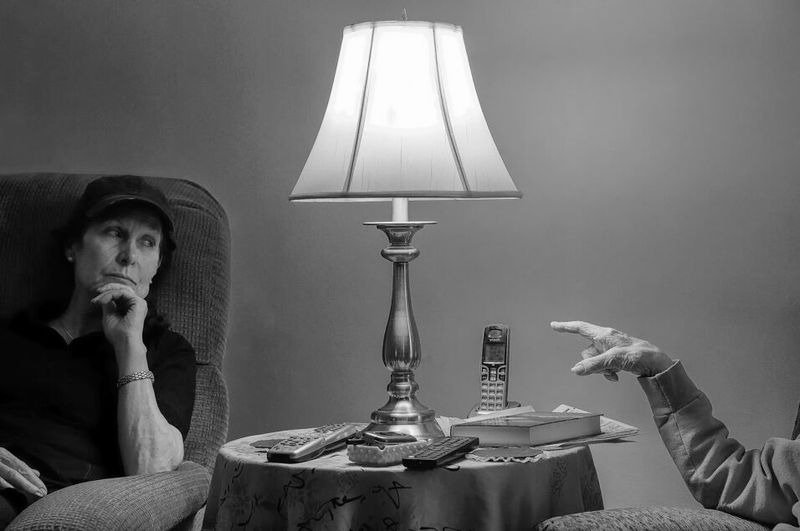
The phone cord stretched under my bedroom door as I whispered into the receiver at 1 AM. “Are you still there?” I’d ask after minutes of silence, never knowing if my high school sweetheart had fallen asleep or if my parents had picked up the extension.
Late-night calls required stealth operations for teenagers under parental surveillance. Without private cell phones, these after-hours conversations happened on shared family lines, creating the need for hushed tones and strategic timing. The risk of discovery added a forbidden thrill to these nighttime connections.
The shared family phone meant calls happened in common areas during daylight hours, making private conversations challenging. Late-night calls were the solution, but they required navigating creaky floorboards and parents’ sleep schedules. The physical challenges—stretching cords to bedrooms, whispering clearly enough to be heard but quietly enough to avoid detection—created a unique communication environment.
14. The Mysterious Prank Call Era

“Is your refrigerator running? Well, you better go catch it!” Prank calls were the original anonymous trolling, but with actual voices and real-time reactions. My friends and I would collapse in giggles after asking some poor soul if they had Prince Albert in a can.
Before caller ID and *69 call tracing, telephone anonymity created the perfect environment for mischief. Prank calls became a rite of passage for bored teenagers, who developed increasingly elaborate scenarios to confuse or amuse random recipients. The anonymity of these calls provided a playground for testing boundaries and experimenting with different personas.
The golden age of telephone pranking required creative thinking and improvisational skills. From simple jokes to complex fictional scenarios, these calls served as low-stakes social experiments. While sometimes annoying for recipients, prank calls rarely caused serious harm in the pre-internet era. Technology eventually killed this pastime through call tracing, number display, and the decline of landlines.
15. The Answering Machine Monologue
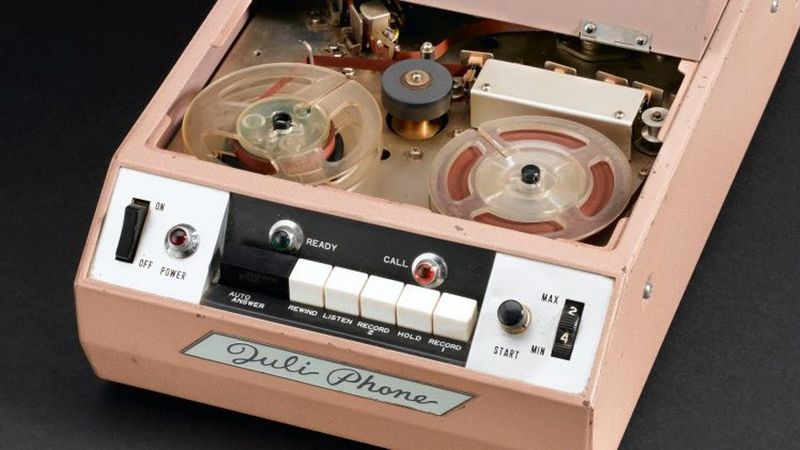
The beep after an answering machine greeting triggered an immediate adrenaline rush. Suddenly I’d forget why I called and launch into an awkward rambling message that inevitably ended with “…anyway, call me back, it’s Sandra… um, bye.”
Answering machines transformed telephone communication by creating asynchronous conversations before texting existed. These devices introduced a strange new challenge: crafting coherent verbal messages without the benefit of real-time feedback. The pressure to communicate clearly after the beep created a unique form of performance anxiety.
People developed personal styles for their outgoing greetings, ranging from straightforward announcements to elaborate productions with music or multiple family members. Some households screened calls by listening while the machine recorded, creating an odd semi-synchronous experience where callers would sometimes plead, “I know you’re there, pick up!”
